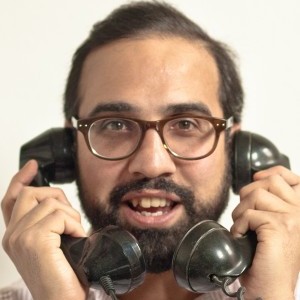Last night, the first panel of Supply/Demand kicked off.
Briefly, Supply / Demand aims to shift in the conversation about convergence and on-demand distribution. While the film and music industries are constantly discussing the opportunities of new technologies, Supply/Demand aims to focus on the needs and the experiences of electronic and media artists. Bringing together scholars, media aggregators and distributors, and artists (musicians and composers, film makers, video artists, sound artists) Supply / Demand asks: How can artists make use of new channels of distribution? How can artists contribute to emerging protocols of distribution.
This first panel came together rather quickly. I had been sending emails to various distribution and aggregator firms (e.g. The Orchard / IODA) as well as to individuals who had been at Pandora. One of my goals for Supply/demand is to pull innovative individuals from the media industry to the table with electronic artists, to reflect upon the experiences and insights of electronic artists. I had no expectations as most of these were cold calls (and emails): None of the Pandora folks responded to any of my messages, but I received a nice reply from the Orchard and a few other aggregator firms. But no one was interested in taking part in this first panel about audio. And so it became completely about radio.
Which may be for the best: Supply/Demand will continue to explore the recombination of television (and the status and prospects for Public Access in the new landscape) and the rise of the mobile phone as the primary “screen”. But the panel began with revolution, set out from utopia. The hacktivist perspective of this first panel will continue to shape the subsequent discussion.

We began with a time machine to take us back from today to 1999, listening to audio from Jason Candler, the August Sound Coalition, and Y2WTKO. And then we jumped in with our first panelist, Jonathan Jay, recalling stumbling upon the idea of streaming over the internet to a remote FM transmitter as a means of avoiding the FCC. (He told the story at length in an article published in Tactical Sound in 2003, which I have reposted here.) The second panelist, Tom Roe of free103point9, spoke first of all about the vitality of unlicensed radio broadcasting (“pirate radio”) today, especially in immigrant and language minority communities. (Hatians, Russians and Hasidic Jews.) He told several stories about surprising pirates in Brooklyn and Florida, topping it off with a story about an employee of a pirate community radio station who stole the equipment to start his own station and the ensuing lawsuit. Tom spoke with urgency about the importance of preserving community broadcasting as a means of public information and cultural expression. He also explained his own experiences with free103point9, their own transition from a pirate radio collective to becoming an arts organization, and their efforts to establish a legal community broadcast station, WGXC. Finally, we heard from John Anderson, who introduced us to a company called ibiquity. “Radio’s Digital Dilemma” as John described it very much stemmed from the investment in ibiquity’s model of HD Radio.
As Ibiquity describes it on their website:
iBiquity Digital is the developer and licenser of HD Radio™ Technology, which is transforming AM and FM broadcasting with vastly increased numbers of channels, drastically improved sound quality and an array of new data services.
Key-word being “licenser” — ibiquity stakes to become a second, private, gatekeeper separate from the FCC over the rights to the airwaves. John unpacked the background of how ibiquity had come to be, and also explained an alternative model, developed by Bob Pittman (“the Most Powerful Man in Radio 2011”) at Clear Channel called I Heart Radio.
John spoke in depth about various policy developments, but did not address the differential payment of music rights by broadcast radio and internet radio. I was curious how this relates to the I Heart Radio scheme but we didn’t get to discuss it in the Q&A: I was more curious if the panelists could reflect on the ways that on-demand forms, specifically podcasting and program archives, had affected their own practice as radio-makers. Tom pointed out that archiving makes liveness (real or staged, as, for example, in competitive reality shows) more valuable. The panelists quickly all reached a consensus about the importance of radio broadcast over the airwaves, the distinct value of terrestrial radio broadcast over internet broadcast or audio archiving. Tom spoke of the flaws of word “radio”, which both means all electromagnetic radiation, and a form of audio communication. He explained free103point9’s use of the word transmission.
I asked John to provide us with a working definition of convergence. He started with the simple communication theory of newspapers, radio, television all collapsing (converging) into a single platform – the Internet. And he introduced us to the critique of the idea that the internet is the final convergent platform (“we cannot predict what the next convergent platform will be. But the network of networks is only one phase of convergence.”) (More on this topic when we get to the mobile phone discussion.)
There were questions on Brecht, Tetsuo Kogawa, and clicktivism. And a long tangent about the disappointments of WBAI led to a discussion of what radio can be and how it could serve the public interest in general and play a part in the protests in Brooklyn this week over the killing of Kamani Gray in particular.
More on all of this over the next few month’s as Supply/Demand unfolds. Next panel is April 17th.
The program was streamed live on free103point9. Stay tuned for an audio rebroadcast soon on WGXC and TV broadcast on ESP TV.


You must be logged in to post a comment.